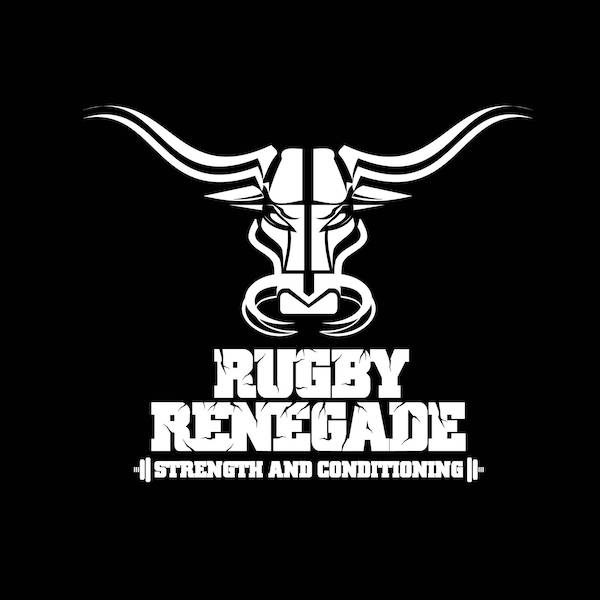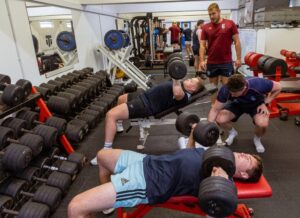There’s no denying it, Speed separates the men from the boys on the pitch! There’s no point being strong and powerful if you can’t catch your opposite number, so we’ve put together the 5 things all fast rugby players have in common to help you understand how you need to train. Let’s have a look at them all first:
Ideal Body Composition
Produce Force
Apply Force Fast
Minimise Ground Contact Time
Good Technique & Footwork
Now let’s break them down individually and look at why they are important and what you need to do to improve them to make you a faster rugby player…
Ideal Body Composition
Fat mass sucks! It should be no surprise that body fat is a hindrance and in no way helps your speed. If you’re unsure strap a 10kg weight vest on and run a few laps of the pitch and you’ll soon agree! Reducing body fat should be something that you continually strive for.
Muscle mass on the other hand is awesome! Not only do the ladies love it but it actually does help your speed (if built the right way!). Muscle is what propels your forward so if you have more if it you have more potential to be explosive.
If you are following the Rugby Renegade programme or similar you will be in a good position but if your focus is reducing body nutrition is your priority and maybe a few extra metcons will help. If muscle gain is your goal check out our Bigger For Rugby programme.
Produce Force
Force production is hugely important and the fastest players have great relative strength (in relation to their bodyweight). A good target is to be able to squat x2 your bodyweight, so if you were 90kg your target would be 180kg for a 1RM. Once you have achieved this you should focus more on explosive strength and power.
Strength training will always be a large portion of your training as it is the foundation of all other qualities so you should understand the best way to develop it. Here are a couple of articles to help with that:
A Formula To Get Stronger For Rugby
And if you want a programme designed specifically to make strong rugby players check out our Stronger For Rugby programme.
Apply Force Fast
That’s right, once you’ve learned to apply force you need to learn how to apply it quickly. There’s no point just being phenomenally strong, if that was the case powerlifters would be the fastest athletes. The key is to be able to produce that force faster than you opposition.
We’ve written tons of articles about explosive strength and power development so here are a few for some ideas:
Developing Explosive Power For Rugby Athletes
Rate of Force Development for Rugby
Power Without the Olympic Lifts
10 Reasons Rugby Players Should Olympic Lift
In the example of running it’s applying force to the ground so use methods such as prowlers and sleds to help build that transference to the pitch.
Minimize Ground Contact Time
The fastest runners spend the shortest amount of time on the floor. This ability is the stretch reflex or stretch shortening cycle. Being good at this not only makes you faster but fitter and more injury resilient. Plyometrics are used to improve this ability and can begin immediately if you use a sensible progression such as the ones shown in this video:
Plyometrics develop the ability to absorb and transfer energy or force quickly and efficiently and is often called stiffness or elasticity. So think of your legs as springs that can store and transfer energy efficiently to propel you across the floor as you do these exercises.
Demonstrate Good Technique/Footwork
Basically if you want to run fast…you need to run fast! You must practice the specific running action in the specific environment. You need to practice running fast with good recovery, no time for fatigue if you want to get faster. A good start is to rest 1min per 10m sprinted so if you are performing 30m sprints you need 3min rest to be fully recovered.
Once you have a good grasp of acceleration and speed mechanics you need to challenge your footwork and speed in the chaotic environment that is rugby. Agility and drills should demand that you change direction quickly and effectively and can react to external stimuli such as the opposition, team mates and the ball.
With or without the ball footwork can help you manipulate the opposition so you can dominate the contact area. Whatever position you play you need this ability and it hinges on good levels of the previous four.
Wrap Up
Hopefully you can now see what it takes to improve your speed for rugby. You might already be very good at some of these but if you fid one that needs improving then you have a great way to get faster for rugby. Once you have mastered all of them you will be some rugby athlete!





